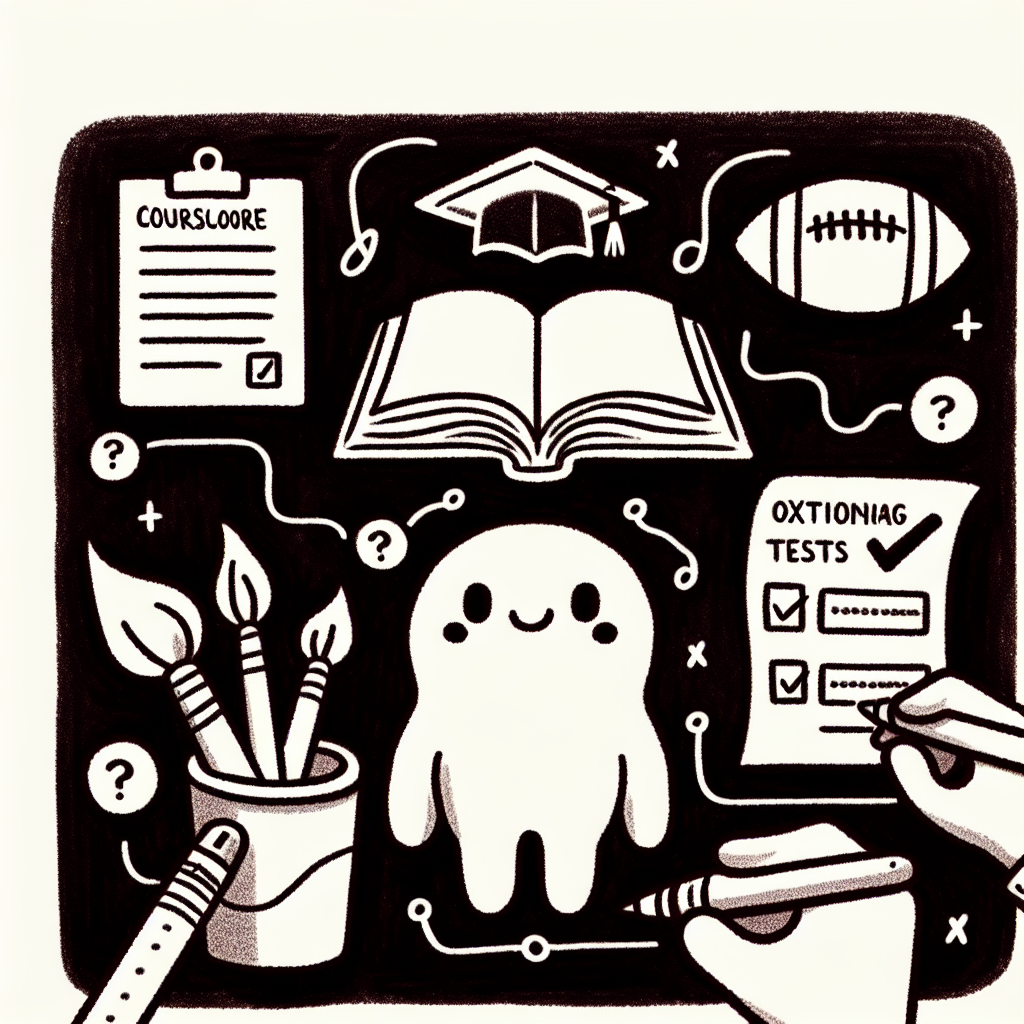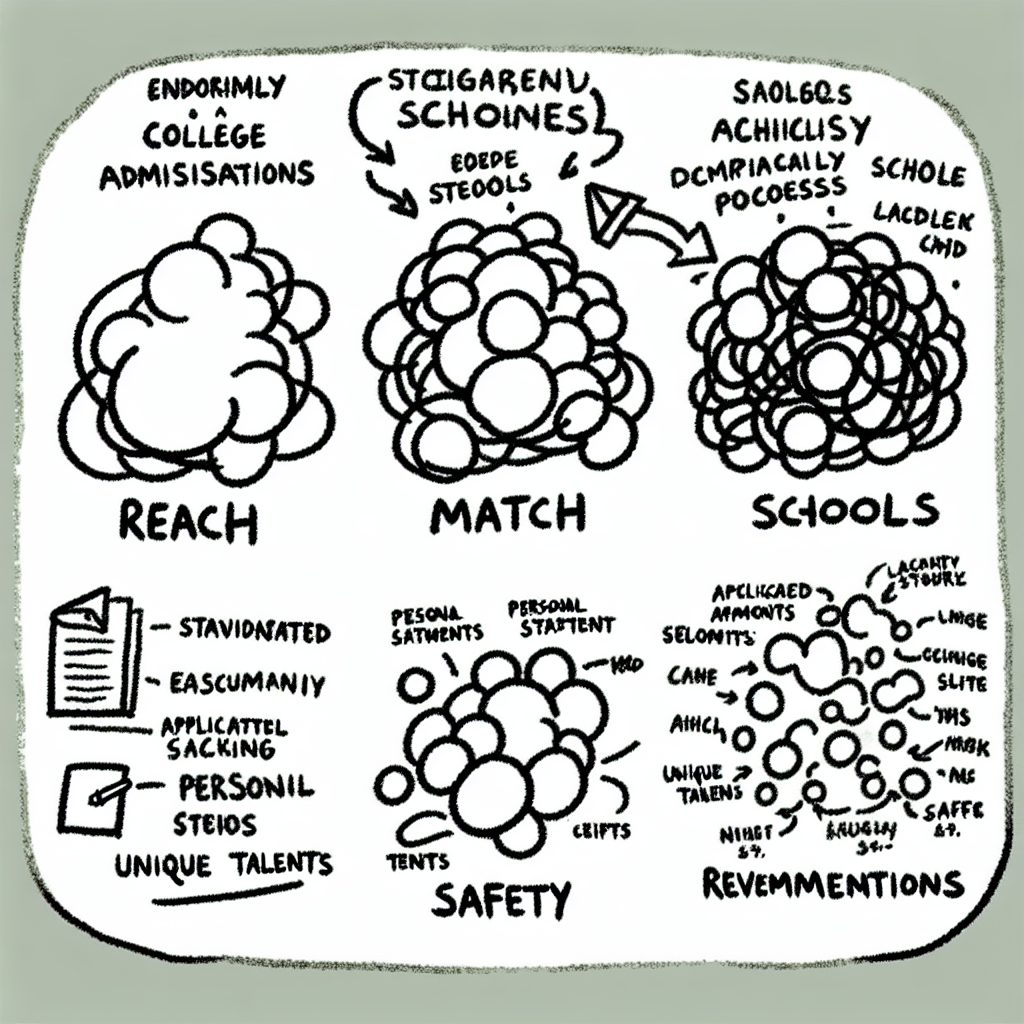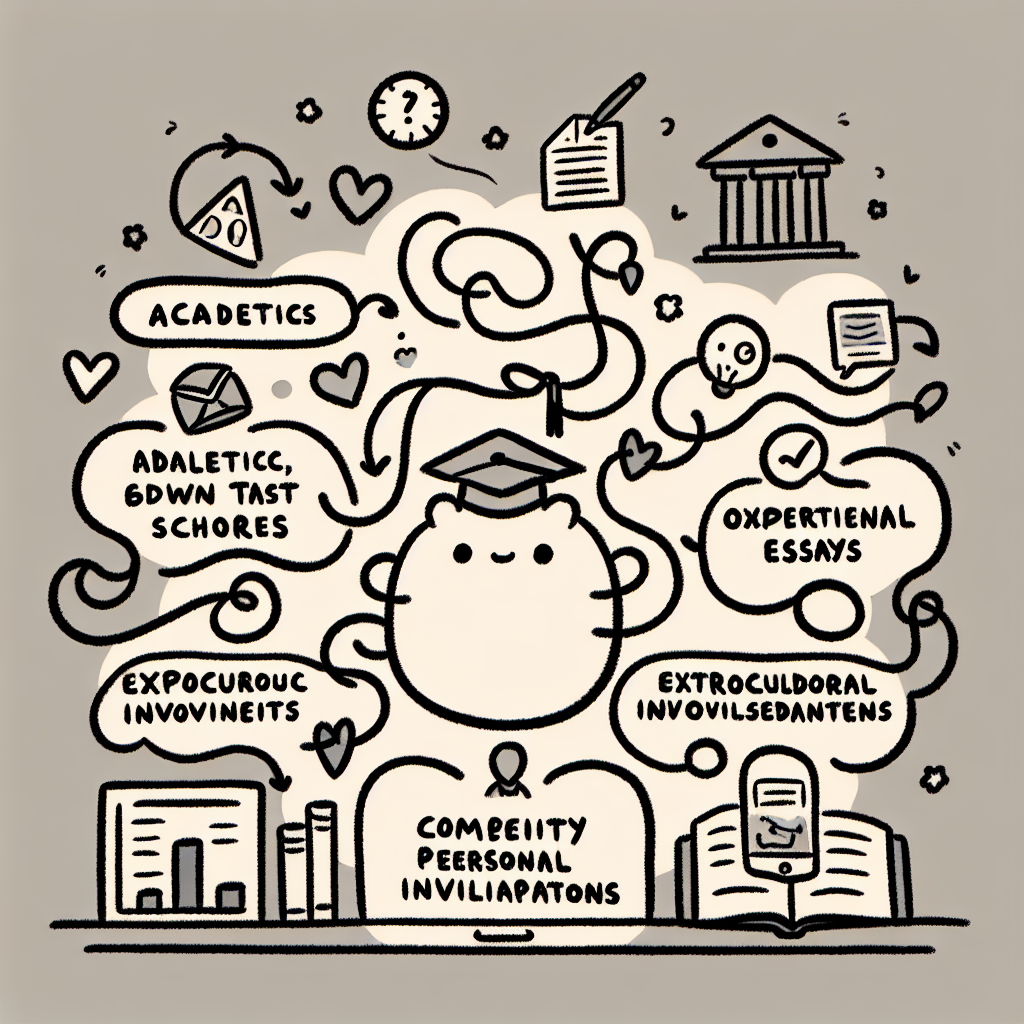Introduction
The landscape of college admissions is undergoing significant transformation, with Application requirements 2025 reflecting these broader shifts. Institutions are increasingly moving away from rigid, test-centered criteria toward more flexible and inclusive standards. This change is largely driven by the growing adoption of test-optional policies and an emphasis on holistic review processes.
As of 2023, over 1,900 U.S. colleges and universities had test-optional or test-blind policies in place, a trend expected to continue through 2025 FairTest.org. These policies allow students to decide whether to submit standardized test scores, placing more weight on other aspects of their application such as coursework rigor, extracurricular involvement, and personal essays.
Holistic admissions review is also becoming more prominent. Admissions officers assess applicants based on a broader set of criteria, including leadership potential, community impact, and personal background. This approach aims to create more equitable opportunities for students from diverse educational and socioeconomic backgrounds.
Key statistics further highlight the evolving nature of Application requirements 2025. For example, the Common App reported that applications increased by over 20% from 2020 to 2023, even as test submissions declined. This suggests that students are embracing the flexibility of current admissions models, and colleges are responding accordingly.
These changes are reshaping how students prepare for and approach the admissions process, signaling a more dynamic and individualized evaluation standard for the 2025 cycle.

The Rise of Test-Optional and Test-Blind Policies
A. Definitions and Distinctions
As part of evolving application requirements for 2025, many colleges have adopted either test-optional or test-blind policies. "Test-optional" means that applicants can choose whether to submit standardized test scores, such as the SAT or ACT, as part of their college application. If submitted, the scores will be considered in the admissions process. "Test-blind," by contrast, means that the institution will not consider standardized test scores at all, even if they are submitted.
The implementation of these policies varies by institution. Some universities may be test-optional for general admission but still require scores for specific programs, merit scholarships, or honors colleges. Others may be fully test-blind across all departments and programs.
B. Growth and Adoption
The shift toward test-optional policies has accelerated significantly in recent years. For the fall 2025 admissions cycle, over 80% of U.S. colleges have adopted test-optional policies (US News). This trend gained momentum during the COVID-19 pandemic, when access to testing centers was limited. However, many institutions have extended these policies beyond the pandemic, reflecting a broader rethinking of application requirements 2025.
Long-term shifts in higher education have also contributed to the rise of test-optional and test-blind approaches. Critics of standardized testing argue that it can disadvantage underrepresented students and does not always predict college success. As a result, many colleges are experimenting with more holistic evaluation methods.
C. Schools Still Requiring Standardized Tests
Despite the widespread adoption of test-optional and test-blind policies, some selective institutions continue to require standardized test scores. Notable examples include the Massachusetts Institute of Technology (MIT) and Georgetown University. These schools assert that test scores provide valuable data that help predict student performance and ensure academic readiness, especially in rigorous programs.
These exceptions underscore the diversity of application requirements in 2025. While the general trend is toward flexibility, certain institutions maintain testing standards based on their specific academic missions and admissions philosophies.

Effects on Application Strategy
Rethinking the Role of Standardized Testing
With evolving application requirements in 2025, the role of standardized testing is being reconsidered by both applicants and admissions offices. While many institutions remain test-optional, submitting high test scores can still be advantageous when they align with or exceed a school's typical range. For instance, SAT scores in the 1500–1580 range or ACT scores between 34–36 are considered competitive for top-tier institutions like Harvard, Stanford, and the University of Chicago (US News). Applicants should evaluate whether their scores enhance their overall profile or detract from stronger components.
Strategic submission is key. If test scores fall within the top 25% of a school's admitted student profile, submitting them can bolster an application. Conversely, students with scores below the median may choose to withhold them, focusing instead on other strengths.
Emphasis on Other Application Components
As standardized testing becomes less central in 2025 application requirements, other components of the college application carry greater weight. Academic rigor and GPA remain foundational. Admissions committees assess not just grades, but the difficulty of coursework—AP, IB, or honors classes signal preparedness for college-level study.
Extracurricular involvement, leadership roles, and meaningful contributions to community initiatives are also critical. Colleges seek students who demonstrate initiative and impact beyond the classroom.
Personal essays have gained importance as a platform to convey individuality, values, and fit with the institution. Demonstrated interest—such as campus visits, interviews, or engagement with admissions events—may also influence decisions at some schools.
Letters of recommendation provide context and validation of a student’s character and academic potential. Strong endorsements from teachers or mentors who know the applicant well can significantly enhance an application.
Case Study Comparisons
Top universities continue to maintain highly selective standards. Understanding what these schools prioritize helps applicants tailor their strategies under 2025 application requirements.
- University of Chicago: With a 5% acceptance rate, admitted students typically present SAT scores between 1510–1570 and ACT scores from 34–35 (US News).
- Stanford University: A 4% acceptance rate and test ranges of 1510–1580 (SAT) and 34–35 (ACT) underscore the competitive landscape (US News).
- Harvard University: With a 3% acceptance rate, Harvard admits students with SAT scores of 1500–1580 and ACT scores from 34–36 (US News).
These profiles illustrate that even in a test-optional environment, high standardized test scores remain a valuable asset when they reflect the upper end of admitted student ranges. However, success at these institutions also depends on excellence across all components of the application.

Equity, Access, and Criticisms
Promoting Equity Through Test-Optional Policies
Test-optional policies have become a central strategy in promoting equity within the college admissions process. By allowing students to choose whether to submit standardized test scores, these policies can help level the playing field for underrepresented and low-income applicants. Many students from disadvantaged backgrounds lack access to expensive test preparation resources, and test-optional policies aim to reduce the weight of such inequities in admissions decisions. In the context of application requirements 2025, more institutions are continuing these policies to address systemic disparities and open doors to a more diverse applicant pool.
Removing standardized test mandates can also alleviate financial burdens associated with multiple test sittings, tutoring, and prep courses. This shift helps ensure that students are assessed more holistically, considering achievements and potential beyond test performance alone.
Critiques and Concerns
Despite the benefits, test-optional policies have drawn criticism from some educators and admissions professionals. One major concern is the potential decline in academic standards. Critics argue that standardized tests provide a common metric to compare applicants across different schools and curricula, and removing this metric may weaken the ability to gauge academic readiness.
Another concern is the increased reliance on subjective elements such as personal essays, recommendation letters, and extracurriculars. These components may be more susceptible to bias and can favor students with greater access to mentoring and college counseling. In the era of evolving application requirements 2025, some worry this shift might inadvertently introduce new forms of inequity.
Additionally, admissions officers face challenges in comparing applicants who submit test scores with those who do not. Without a uniform benchmark, evaluating academic potential across a diverse applicant pool becomes more complex, potentially affecting consistency in admissions decisions.

The Full Spectrum of Admissions Selectivity
Highly Selective Institutions
For the 2025 application cycle, highly selective institutions continue to raise the bar for prospective students. Admissions trends indicate an increasing emphasis on not only academic excellence but also exceptional extracurricular involvement. Applicants to elite colleges—such as Ivy League schools and top-tier liberal arts colleges—are expected to present near-perfect GPAs, top standardized test scores (where required), and a demonstrated commitment to leadership or achievement outside the classroom. As acceptance rates remain in the single digits at many of these institutions, the application requirements for 2025 reflect intensified competition and a holistic review process that evaluates personal essays, recommendations, and demonstrated interest.
Open-Admission Colleges
At the other end of the spectrum, open-admission colleges offer an alternative path to higher education for a broader range of students. Institutions like the Art Academy of Cincinnati and Blue Mountain Christian University maintain 100% acceptance rates, emphasizing accessibility over selectivity (US News). These colleges play a crucial role in expanding educational opportunities, particularly for students who may not meet the rigorous criteria of more selective schools. Their application requirements for 2025 typically include proof of high school graduation or an equivalent credential, with minimal emphasis on standardized test scores or extracurricular achievements.
Finding the Right Fit
In the context of diverse admissions selectivity, it is important for students to apply strategically across a range of institutions. Applying to a mix that includes reach, match, and safety schools can improve the likelihood of acceptance and scholarship opportunities. The 2025 application requirements across different institutions highlight the importance of identifying colleges that align with a student’s academic profile, interests, and career goals. While brand-name recognition often dominates college discussions, many lesser-known schools offer strong programs, supportive communities, and pathways to success that may better suit individual needs.

How Applicants Should Prepare for 2025 Admissions
A. Building a Balanced College List
Creating a balanced college list is a critical step in meeting application requirements 2025. Students should include a mix of reach, match, and safety schools. Reach schools are those where admission is less likely based on the applicant’s academic profile, match schools align closely with the student’s qualifications, and safety schools are those where the applicant is highly likely to be admitted.
With many institutions maintaining or expanding test-optional policies for 2025, applicants must evaluate each college’s stance on standardized testing. Additionally, institutional priorities, such as geographic diversity or first-generation status, can influence admissions decisions and should be considered when selecting schools.
B. Deciding Whether to Submit Test Scores
Applicants must carefully assess whether to submit standardized test scores based on each college’s published score ranges and admission trends. Understanding where their scores fall in relation to the middle 50% ranges can help applicants decide if submitting scores strengthens their application.
With application requirements 2025 continuing to be shaped by flexible testing policies, students should use test-optional options strategically. For some, withholding scores may allow other strengths in the application to stand out.
C. Strengthening the Application Beyond Tests
Given the continued emphasis on holistic review, students must focus on the qualitative components of their applications. Crafting a compelling personal statement is essential. It should communicate an authentic voice, personal growth, and meaningful experiences.
Applicants should also highlight unique talents, extracurricular achievements, or community contributions that demonstrate initiative and leadership. Preparing recommenders with specific anecdotes or accomplishments can help produce stronger letters. Overall, showcasing genuine involvement and character traits can make a difference, especially in a test-optional landscape guided by evolving application requirements 2025.

VI. Resources and Tools for Applicants
Students preparing for application requirements in 2025 can benefit from a variety of resources and tools designed to streamline the admissions process and provide clarity on evolving standards.
A key topic for 2025 applicants is understanding test-optional policies. The US News Article on Test-Optional Policies outlines which top colleges still require standardized test scores and which have adopted flexible testing policies. This is essential for planning whether to take the SAT or ACT based on individual college requirements.
For students targeting specific institutions, school-specific admissions pages offer detailed information on application requirements for 2025. For example, the University of Chicago Admissions Info outlines the school’s holistic review process, which does not require standardized test scores. Similarly, information about Stanford University and Harvard University gives applicants insight into GPA expectations, extracurricular emphasis, and optional testing policies, all within the context of 2025 requirements.
For applicants aiming for less selective institutions, the US News list of Colleges with Highest Acceptance Rates can be a useful tool in identifying schools where admission may be more attainable. This can help applicants build a balanced college list when weighing the complexity of various application requirements for 2025.
By leveraging these tools, applicants can stay informed and make strategic decisions aligned with the latest application requirements for 2025.

Conclusion
As of 2025, application requirements have evolved to reflect a more nuanced and comprehensive evaluation process. Traditional metrics like standardized test scores and GPA remain relevant, but they are now often balanced by holistic assessments that consider personal essays, extracurricular involvement, and letters of recommendation. The shift emphasizes not only academic readiness but also character, resilience, and alignment with institutional values.
Applicants are encouraged to approach the application process strategically, ensuring they meet all formal criteria, while also presenting themselves authentically. A holistic mindset—one that integrates both achievements and personal story—can strengthen an application and better reflect the candidate’s full potential. Understanding and adapting to the updated application requirements in 2025 is key to navigating the admissions landscape effectively.














